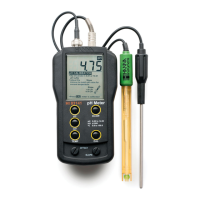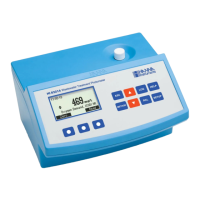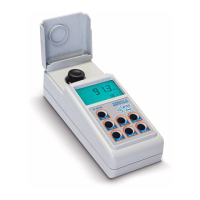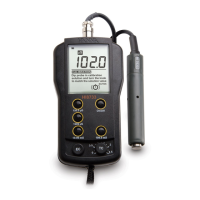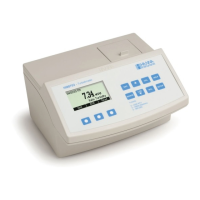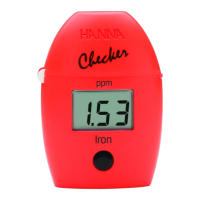5
PRINCIPLE OF OPERATION
Absorption of light is a typical phenomenon of interaction between electromagnetic radiation and matter.
When a light beam crosses a substance, some of the radiation may be absorbed by atoms, molecules or
crystal lattices.
If pure absorption occurs, the fraction of light absorbed depends both on the optical path length through the
matter and on the physical-chemical characteristics of substance according to the Lambert-Beer Law:
-log I/I
o
= ε
λ
c d
or
A = ε
λ
c d
Where:
-log I /I
o
= Absorbance (A)
I
o
= intensity of incident light beam
I = intensity of light beam after absorption
ε
λ
= molar extinction coefficient at wavelength λ
c = molar concentration of the substance
d = optical path through the substance
Therefore, the concentration "c" can be calculated from the absorbance of the substance as the other factors
are known.
Photometric chemical analysis is based on the possibility to develop an absorbing compound from a specific
chemical reaction between sample and reagents.
Given that the absorption of a compound strictly depends on the wavelength of the incident light beam,
a narrow spectral bandwidth should be selected as well as a proper central wavelength to optimize
measurements.
The optical system of HI 83099 is based on special subminiature tungsten lamps and narrow-band
interference filters to guarantee both high performance and reliable results.
Five measuring channels allow a wide range of tests.
Instrument block diagram (optical layout)
A microprocessor controlled special tungsten lamp emits radiation which is first optically conditioned and beamed
through the sample contained in the cuvette. The optical path is fixed by the diameter of the cuvette. Then
the light is spectrally filtered to a narrow spectral bandwidth, to obtain a light beam of intensity I
o
or I.
The photoelectric cell collects the radiation I that is not absorbed by the sample and converts it into an
electric current, producing a potential in the mV range.
The microprocessor uses this potential to convert the incoming value into the desired measuring unit and to
display it on the LCD.

